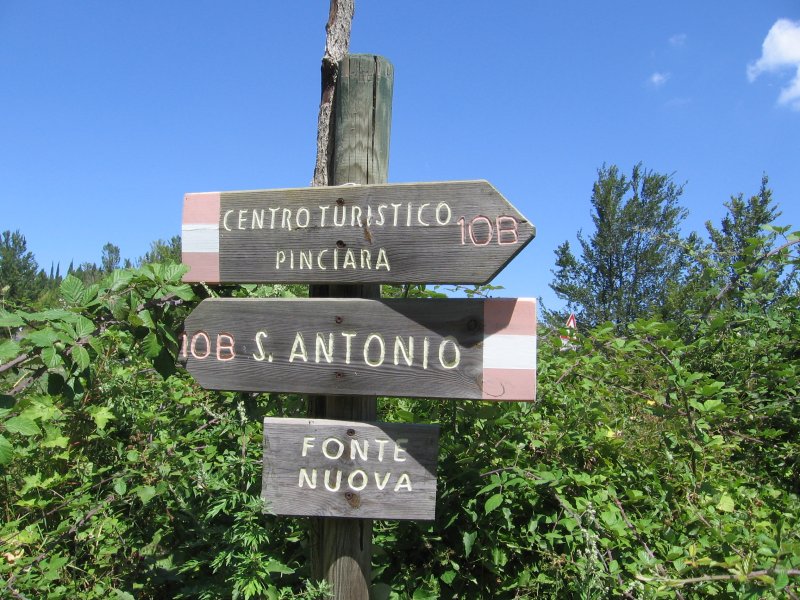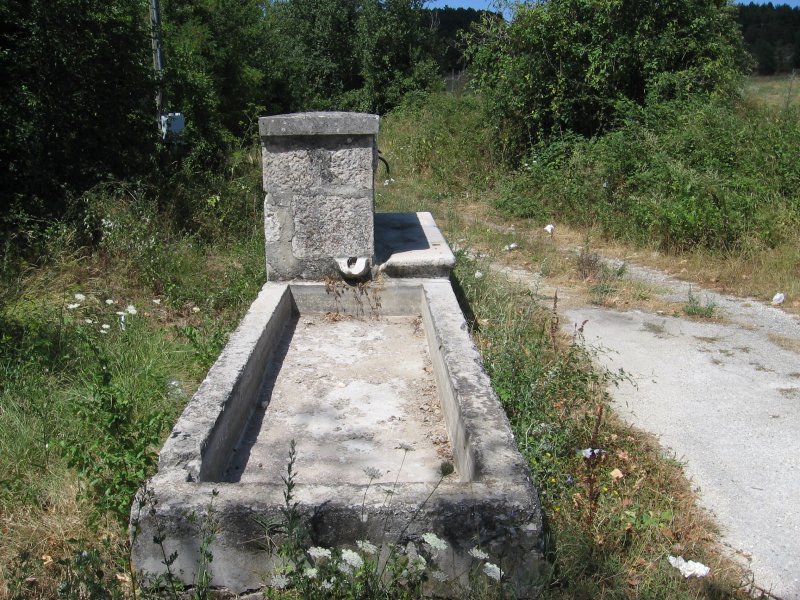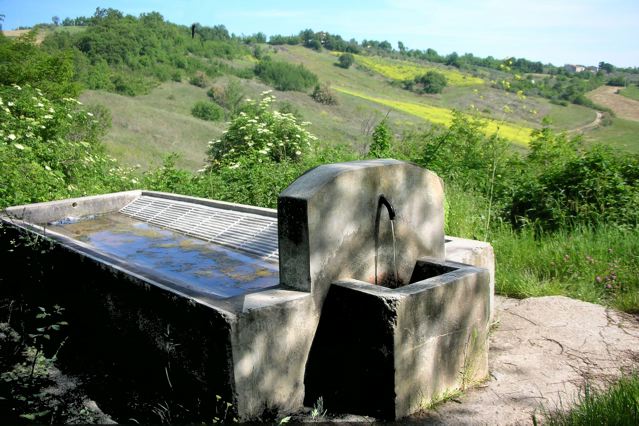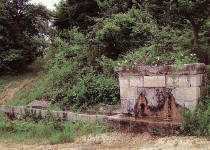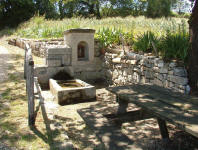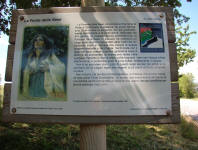Fonti e Fontane
di Torricella
Founts and Fountains of Torricella
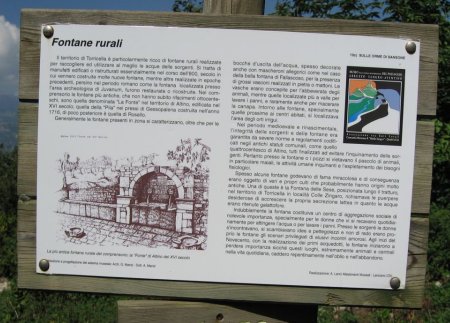
click for
larger image
|
Fontane Rurali Il territorio di Torricella è particolarmente ricco di fontane rurali realizzate per raccogliere ed utilizzare al meglio le acque delle sorgenti. Si tratta di manufatti edificati o ristrutturati essenzialmente nel corso dell’800, secolo in cui vennero costruite molte nuove fontane, mentre altre realizzate in epoche precedenti, persino nel periodo romano come la fontana localizzata presso l’area archeologica di Juvanum, furono restaurate o ricostruite. Nel comprensorio le fontane più antiche, che non hanno subito rifacimenti ottocenteschi, sono quella dominata “La Fonte” nel territorio di Altino, edificata nel XVI secolo; quella della “Pila” nei pressi di Gessopalena costruita nell’anno 1716, di poco posteriore è quella di Rosello. Generalmente le fontane presenti in zona si caratterizzano, oltre che per le bocche d’uscita dell’acqua, spesso decorate anche con mascheroni allegorici come nel caso della bella fontana di Fallascoso, per la presenza di grossi vasconi realizzati in pietra o mattoni. Le vasche erano concepite per l’abbeverata degli animali, mentre quelle localizzate più a valle per lavare i panni, e raramente anche per macerare la canapa. Intorno alle fontane, specialmente quelle prossime ai centri abitati, si localizzava l’area degli orti irrigui. Nel periodo medioevale e rinascimentale, l’integrità della sorgenti e delle fontane era garantita da severe norme e regolamenti codificati negli antichi statuti comunali, come quello quattrocentesco di Altino, tutti finalizzati ad evitare l’inquinamento delle sorgenti. Pertanto presso le fontane o i pozzi si vietavano il pascolo di animali, in particolare maiali, le attività umane inquinanti e l’espletamento dei bisogni fisiologici. Spesso alcune fontane godevano di fama miracolosa e di conseguenza erano oggetto di veri e propri culti che probabilmente hanno origini molto antiche. Una di queste è la Fontana delle Sese, posizionata lungo il tratturo, nel territorio di Torricella in località Colle Zingaro, richiamava le puerpere desiderose di accrescere la propria secrezione lattea in quanto le acque erano ritenute galattofore. Indubbiamente la fontana costituiva un centro de aggregazione sociale di notevole importanza, specialmente per le donne che vi si recavano quotidianamente per attingere l’acqua o per lavare i panni. Presso le sorgenti le donne s’incontravano, si scambiavano idee e pettegolezzi e non di rado erano proprio le fontane gli scenari privilegiati di elusivi incontri amorosi. Agli inizi del Novecento, con la realizzazione dei primi acquedotti, le fontane iniziarono a perdere importanza sicché questi luoghi, estremamente animati e centrali nella vita quotidiana, caddero repentinamente nell’oblio e nell’abbandono. Realizzazione: A. Lanci Allestimenti Museali – Lanciano (CH) |
Rural Fountains The territory of Torricella has a particularly large number of rural fountains built to gather and make the best use of water sources. Most of these were built or restructured during the 1800s, a century which witnessed the building of many new fountains and the restoration or reconstruction of older fountains, even ones dating back to Roman times, as in the one near the Juvanum archeological site. Some fountains did not undergo restructuring in the 1800s. The oldest fountains in the area to remain intact were the 16th century “La Fonte” in the territory of Altino, the “Pila” near Gessopalena built in 1716, and just before that the one in Rosello. Generally, the fountains in the area are characterized by their spouts, often decorated with large allegoric masks as in the beautiful fountain of Fallascoso, as well as their large basins built of stone or brick. The basins were designed to allow animals to drink whereas those in the valleys were designed more to wash clothes, and in rare occasions also to macerate hemp fiber. There were irrigated vegetable gardens surrounding the fountains, especially near inhabited areas. In the medieval and renaissance eras, the integrity of the springs and fountains was guaranteed by strict norms and regulations codified in the ancient municipal statutes, as in those for Altino from the 1400s, all with the intention of preventing the pollution of water sources. Therefore, animals, especially pigs, could not feed near fountains and wells, and human forms of pollution, including the depositing of human waste, were prohibited. Some fountains were well known for their miraculous qualities; consequently, they became objects of their own cults with probable ancient roots. One of these is the Fontana delle Sese, positioned along the Tratturo (sheep track) in the Colle Zingaro hamlet of Torricella. This fountain was believed to promote milk production, and women were drawn to its waters for this purpose.
Undoubtedly, fountains were very important places to socialize, especially
for women who spent time there on a daily basis to collect water or wash
clothes. Near sources of water women met, exchanged ideas and chatted. At
times fountains were also the scenes of elusive romantic encounters. At the
beginning of the 1900s, the first aqueducts were constructed and the
fountains began to lose importance. Thus, these places that had been so
alive and so central to everyday life fell regrettably into oblivion and
abandon. Produced by: A. Lanci Allestimenti Museali - Lanciano (CH) |
|
Fontana delle Coste Lungo la strada comunale Fontana Delle Coste. La fonte venne realizzata alla fine del XVIII secolo per convogliare le acque sorgive delle Coste, una zona di Torricella Peligna. Presenta decorazioni con cornici classiche e pietre scolpite a rosetta. Il lavatoio fu aggiunto negli anni Trenta del Novecento.
Fontana delle Coste (Fountain of the Coste) Along the municipal road referred to as Fontana Delle Coste. The fount was built at the end of the 18th century to gather the spring water of the Coste area of Torricella Peligna. It is decorated with classical cornices and rosette sculptured stonework. The washbasin was added in the 1930s. |
click for larger image/cliccate qui |
|
La Fonte Lungo la strada comunale La Fontana. La fonte venne realizzata a cavallo tra il XIX e il XX secolo. Presenta, scolpite nella pietra, un mascherone e delle rosette.
La Fonte (The Fount) Along the municipal road referred to as La Fontana. It was built at the turn of the 19th and 20th centuries. A large mask and rosettes are sculptured in the stonework.
|
(insert photo) |
|
Fonte Nuova Lungo la Strada Provinciale Peligna. La fontana venne realizzata alla fine dell’Ottocento in corrispondenza di una sorgente naturale.
Fonte Nuova (New Fount) Along the Peligna Provincial Road. The fountain was built at the end of the 18th century to tap a natural spring. |
click for larger image/cliccate qui |
click for larger image/cliccate qui |
click for larger image/cliccate qui |
|
Nella contrada Ripa Bianca, precedentemente chiamata Pulcinella.
Fonte Lu Pisciarelle (Lu Pisciarelle Fount) In Ripa Bianca, a hamlet formerly referred to as Pulcinella.
|
|
|
Fonte del Purgatorio Lungo la omonima strada comunale, veniva utilizzata per il lavaggio della lana tosata destinata ai lanifici di Taranta Peligna.
Fonte del Purgatorio (Fount of Purgatory) Along the municipal road referred to as Fonte del Purgatorio. It was used to wash the shorn wool destined for the woolen mills of Taranta Peligna.
|
(insert photo) |
|
La Fonte delle Sese (Seno) Nei pressi del tratturo e la Chiesa
di Sant'Agata a Colle Zingaro. Conosciuta anche come la Fonte di Sant’Agata, che fu martirizzata con il
taglio del seno. Quantunque la sorgente non sia particolarmente abbondante e
la costruzione, realizzata nel XIX secolo, di modesta fattura architettonica,
la Fontana delle Sese in passato ha costituito un luogo assiduamente
frequentato dalle madri del circondario. Si riteneva che l’acqua di questa
sorgente avesse proprieta’ galattoforo ossia di favorire ed accrescere la
secrezione lattea nelle puerpere. Pertanto le donne erano solite bagnarsi i
seni con l’acqua e fare offerte votive, in particolare pezzi di pane buttati
direttamente in acqua. Fountain of the Sese (Dialect for 'Breasts') In Colle Zingaro near the Church of Sant'Agata and the "tratturo",
the trail once used to herd sheep.
|
click for larger image/cliccate qui |
